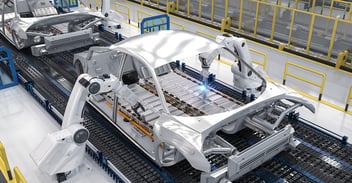
Enterprise Resource Planning (ERP) isn’t a hyped concept anymore. It’s reality, and it’s here to stay. Knowing the emerging trends in ERP provides the opportunity to understand what one should do in their enterprise to achieve the desired results from an ERP implementation. So, what are the top 10 emerging trends in ERP?
#1 CRM is at the top
With various consumer based companies performing poorly due to the escalating recession, companies have realized the importance of using customer data to their advantage. Hence the leading purchases in ERP tend to be for a CRM system.
#2 Need based ERP purchases
One aspect of ERP which stymied its usage in SMBs was that small organizations required only some of the functionalities offered by a full-fledged ERP software. Except the core functions, others remained idle, which reduced the overall productivity of the purchase. The current trend is need based sales of the ERP software.
#3 Increasing focus on business intelligence ERP
Companies are focusing on making better predictions by using a ERP software with specialized business intelligence. Decision making processes has markedly improved if the right ERP system is in place.
#4 Increased need for specialized ERP services
When ERP software was introduced, vendors were concentrating almost entirely on making specialized systems. However, as time went on, they started favoring generic ERP systems. It appears that the clock has turned back as specialized ERP software is being favored by organization nowadays.
#5. Better Integration architecture
Due to the increase in specialized ERP software, the focus of the ERP consultants has shifted more towards providing better integration architecture for competent ERP solutions.
#6 Big companies acquiring smaller startups
The big players are either merging with or acquiring bigger companies. There are of course newer players in the market, but the big fishes seem to be becoming more and more dominant.
#7 Rising importance of ERP on Cloud
Enterprises prefer ERP delivered as SaaS. Ramco’s ERP on Cloud is a prime example of such a service.
#8 More focus on profit from ERP
While ERP has been in general successful, companies aren’t blindly implementing them anymore. They have become very sensitive to the ROI.
Check Out: 10 Key Benefits Of Using ERP Software
#9 Mobile ERP
Companies are investing on ERP solutions accessible from mobile devices like tablets and smartphones.
#10 Emergence of tiered ERP systems
Larger enterprises are focusing towards making two-tiered ERPs, with the top tier working for the headquarters and the lower tier for the subsidiaries.
The ERP landscape is undergoing a significant transformation as businesses move towards more flexible and scalable Cloud ERP solutions. Traditional ERP systems often required extensive infrastructure and on-premise deployment, limiting agility and increasing costs. However, the rise of ERP solutions powered by cloud technology has redefined how enterprises manage their operations efficiently.
Why Businesses Are Adopting Cloud ERP Solutions
- Scalability & Flexibility
Cloud-based ERP solutions allow businesses to scale their operations effortlessly. Unlike traditional ERP systems, cloud deployments enable seamless expansion without the need for heavy IT investments. - Cost-Effective Implementation
Adopting Cloud ERP solutions eliminates the need for expensive hardware and maintenance costs associated with on-premise ERP systems. Companies can now opt for a subscription-based model, reducing upfront expenses. - Enhanced Security & Compliance
Leading ERP solutions offer advanced security protocols, ensuring data protection and regulatory compliance. Cloud-based ERP systems provide real-time security updates, reducing risks associated with cyber threats. - Real-Time Data & Accessibility
A major advantage of Cloud ERP solutions is their ability to provide real-time data insights from anywhere. Employees can access the ERP system via any internet-connected device, enhancing productivity and decision-making. - Seamless Integration & Customization
Modern ERP systems are designed to integrate with various business applications, streamlining workflows across departments. Cloud ERP solutions offer customization features that align with industry-specific needs, improving operational efficiency.
Frequently Asked Questions (FAQs)
Enterprise asset management (EAM) involves the management of mission critical assets of an organization throughout each asset's lifecycle. EAM is used to plan, optimize, execute, and track the needed maintenance activities with the associated priorities, skills, materials, tools, and information. The aim is to optimize the quality and utilization of assets throughout their lifecycle, increase productive uptime and reduce operational costs.
Enterprise asset management (EAM) involves the management of the maintenance of physical assets of an organization throughout each asset's lifecycle. EAM is used to plan, optimize, execute, and track the needed maintenance activities with the associated priorities, skills, materials, tools, and information.
The software helps in effective maintenance of assets through preventive, predictive, shutdown and breakdown maintenance strategies. The system also helps enterprises mitigate equipment risks by enhanced safety standards. The streamlined operations and improved asset performance helps organizations increase their investment effectiveness.
EAM is important because it helps organizations track, assess, manage and optimize asset quality and reliability. Asset intensive Organizations have hundreds, thousands, even millions of assets which needs to be maintained to maximize / optimize life of these assets to increase the return on investment.
The key features of effective EAM are:
- Work management.
- Maintenance Strategies (Preventive/ Predictive / Breakdown / Shutdown).
- Planning and scheduling.
- Supply chain management.
- Health and safety.
- Mobility.
- Analytics.
- Improved Asset Health at reduced cost through data driven maintenance Programs
- Complete visibilityon entire maintenance data across Equipment, across Models, across Branches to aid in analysis & decision making such as to Repair or Replace the Equipment
- Insightful analysis of Inspection Data to improve customer satisfaction
- Effective maintenance management enhanced by predictive maintenance and inbuilt analytics
- Increased reliability and safety, keeps complete track of all the inspections & calibration schedules
- Mobile Application enables users to execute work while “in the field” leading to minimized non-productive time and increased productivity and reduces duplication of work and human errors in recording information.
- Quick turnaround time through Actionable Notification & Alerts for every process in real time and accessible anytime and anywhere.
- Improved Regulatory Part of asset management involves the implementation of better O&M practices, which can significantly improve compliance.
Asset Intensive companies under the following Industries :
- Ports
- Cement and Mining
- Utilities
- Fleet Maintenance
- Equipment Rental
- Other Manufacturing
- Real Estate & Infrastructure
- Power Generation
Contact us for a meeting and schedule a demo
This differs on case to case basis, based on the type of installation and unique industry specific requirements. Contact us for a meeting and schedule a demo.
This differs on case to case basis, based on the type of installation and unique industry specific requirements. Contact us for a meeting and schedule a demo.
Stay Connected, follow us on LinkedIn / Twitter to know more about EAM Software latest trends.

